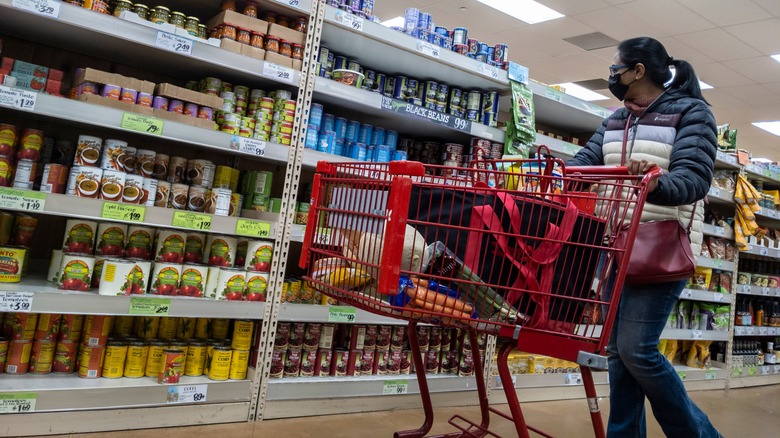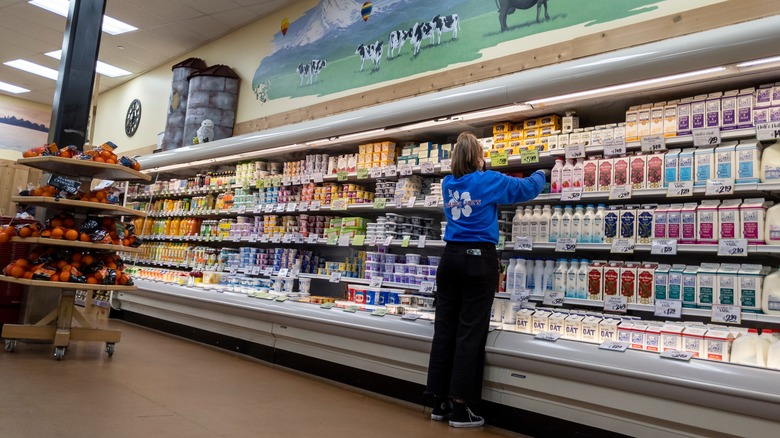The Grocery Store Shelving Convention Trader Joe's Rejects
It's common knowledge that folks can't get enough of Trader Joe's, but even so, the store's stats are impressive. The organic grocery chain has demonstrated a massive and continuous increase in year-over-year sales. In 2015, TJ's revenue hit $8.27 billion; by 2021, sales surpassed $13 billion (per Zippia). So, what keeps people coming back? And what makes TJ's any different from other supermarkets? Spoiler alert: it isn't just offerings like Everything But the Bagel Seasoning.
Unlike many other grocery stores, says The Sun, Trader Joe's doesn't accept "shelf space fees." Shelf space fees are essentially bribe money that brands pay grocery stores for a better piece of real estate on supermarket shelves. (i.e. If you fork over some money, stores will stock your product at eye level instead of the bottom shelf.)
According to the Center for Science and the Public Interest via CBS News, one candy brand paid stores $500,000 to display a product beside cash registers. Another spokesperson from a condiment company said shelling out $5,000-$20,000 per item in shelf space fees is normal. It's a strategic advertisement move for many suppliers, but it's a game TJ's simply doesn't play.
In fact, according to Investopedia, Trader Joe's stock doesn't exist at all. The chain has more than 500 stores spanning 42 states, but has remained private ever since the real "Trader Joe" Joe Coulombe founded the chain in 1967. Here's why it makes such a big difference.
Products can't buy their way to the front at TJ's
Since Trader Joe's is 100% privately owned, says Investopedia, "appeasing the shareholders" isn't a part of TJ's branding and business conversations. By not having to cater to stakeholder expectations, Trader Joe's can execute total creative control over its shelving. A large part of that includes promoting Trader Joe's brand products, which make up over 80% of the store's inventory, per Today.
This is also why TJ's stores are physically smaller than many other supermarket giants like Walmart or Target. TJ's only carries about 4,000 products, a shockingly small figure compared to the average supermarket's 50,000 product lineup. And since they offer a smaller selection of products, TJ's can keep an eye on which items are performing well and which ones should be rotated out. As Trader Joe's Marketing Director Tara Miller puts it, "At Trader Joe's, the only way we make money is when the customer buys something at the cash register ... but that means that product has earned its place on our shelves."

